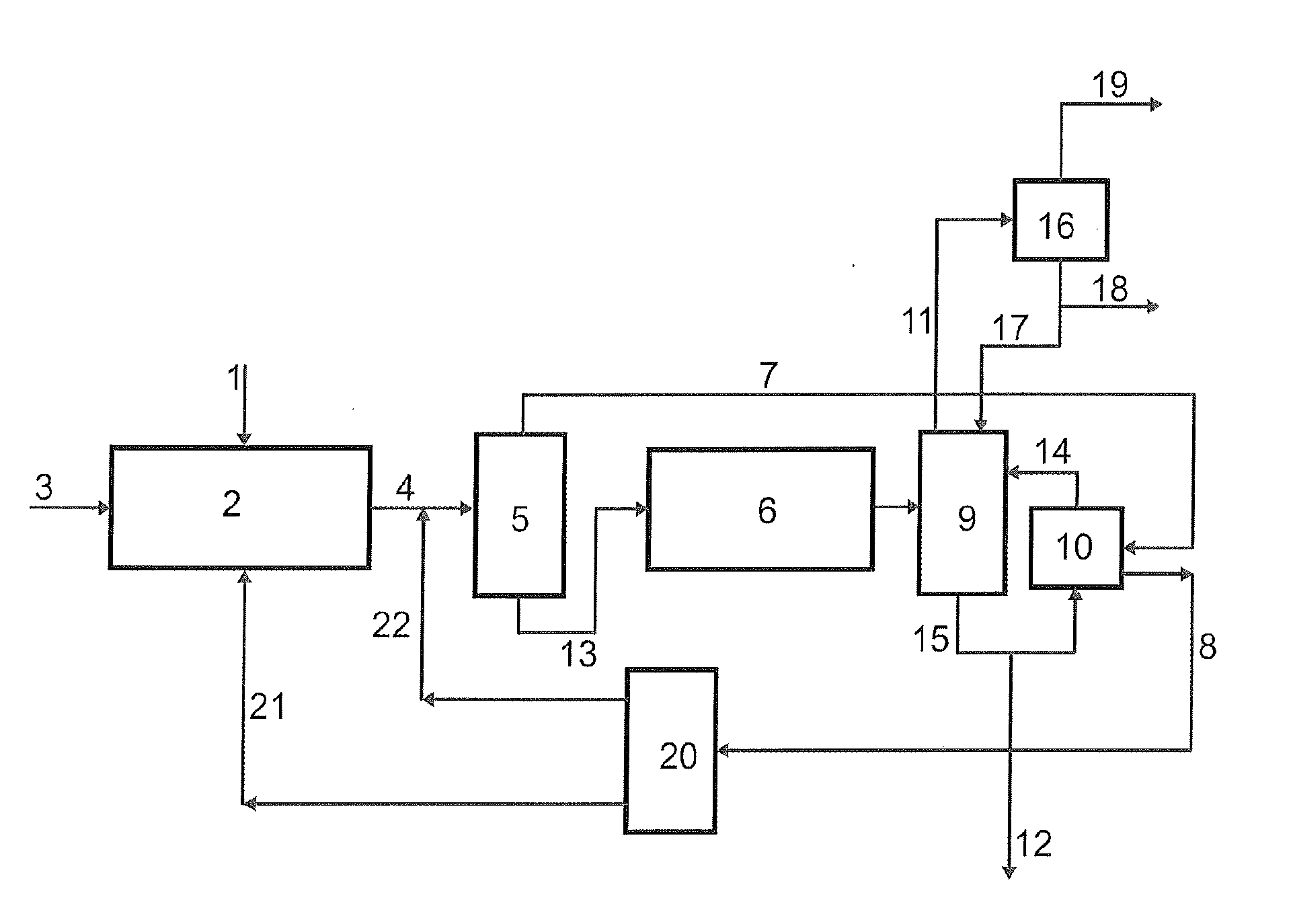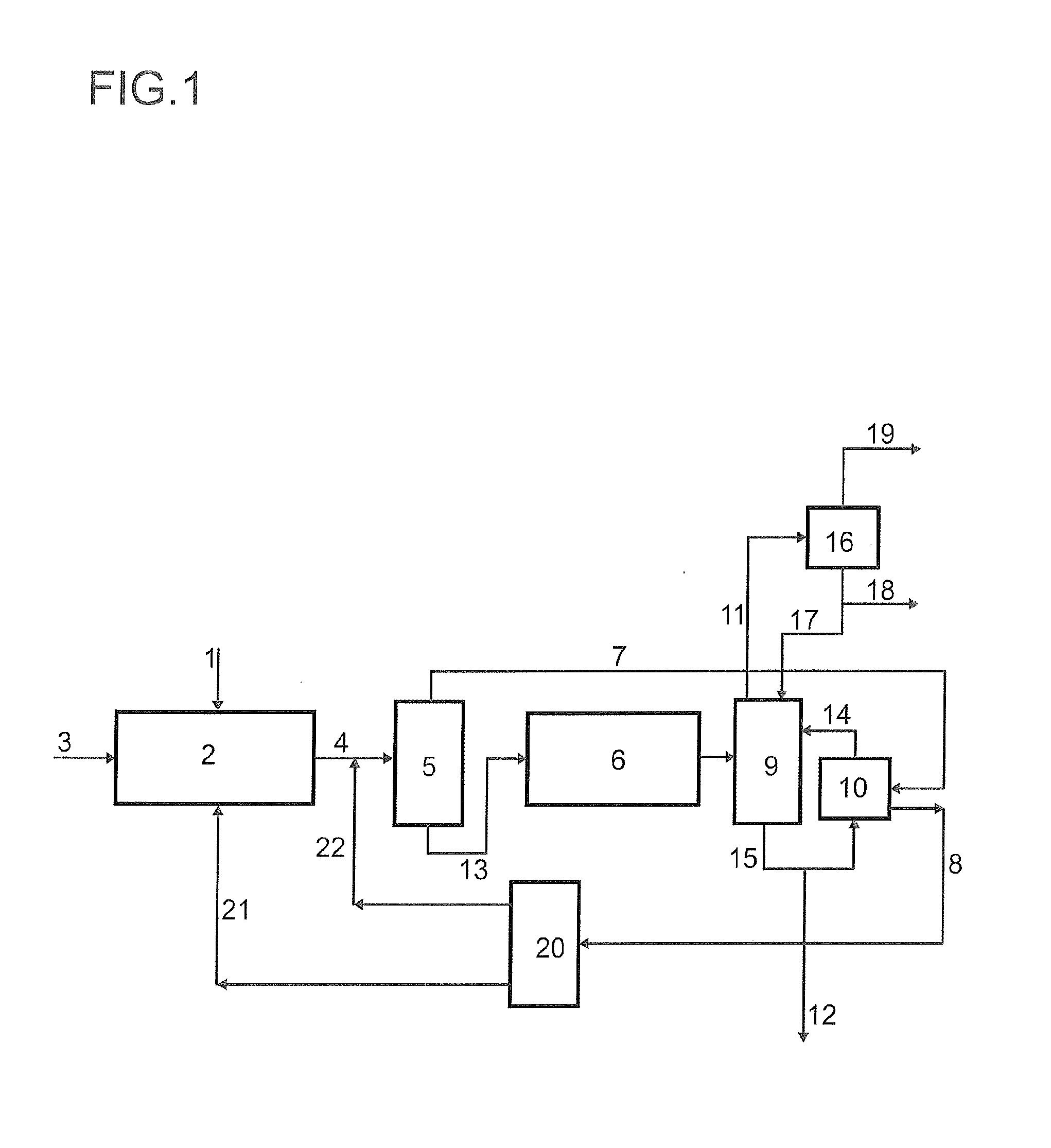Process for purifying wastewaters from the workup of crude aromatic nitro compounds
a technology of crude aromatic nitro compounds and wastewater, applied in the nature of water treatment, multi-stage water/sewage treatment, separation processes, etc., can solve the problems of adverse effects of biological water treatment plants, depletion of undesired organic constituents, and formation of burdens on buffer capacity, so as to achieve great economic and ecological advantages
- Summary
- Abstract
- Description
- Claims
- Application Information
AI Technical Summary
Benefits of technology
Problems solved by technology
Method used
Image
Examples
example 1
[0114]First, crude mononitrobenzene was obtained according to example 1 from application WO 0164333 (A2) with subsequent phase separation.
[0115]The multistage wash of the crude mononitrobenzene thus obtained (step a of the process according to the invention) gave two wastewater streams. The first wash with a mass ratio of water to mononitrobenzene of 0.4 led to a wastewater with 6500 ppm by weight of phenolic secondary components and 3100 ppm by weight of other aromatic components such as benzene and mononitrobenzene. The wastewater from the second wash with a ratio of water to mononitrobenzene of 0.3 comprises a total of 3225 ppm by weight of benzene and mononitrobenzene. The organic secondary constituents of both wastewater streams were removed by stripping with steam (step b of the process according to the invention). The absolute pressure in the stripping was 3.5 bar. The consumption of steam in step b was 8.3 tonnes per hour with a wastewater flow of 58 tonnes per hour supplied...
example 3
[0121]Mononitrobenzene was prepared according to example 1 from the application WO 0164333 (A2) with subsequent phase separation.
[0122]The multistage wash of the mononitrobenzene thus obtained (step a of the process according to the invention) gave two wastewater streams. The first wash with a mass ratio of water to mononitrobenzene of 0.4 led to a wastewater with 6500 ppm by weight of phenolic secondary components and 3100 ppm by weight of other aromatic components such as benzene and mononitrobenzene. The wastewater from the second wash with a ratio of water to mononitrobenzene of 0.3 comprises a total of 3225 ppm by weight of benzene and mononitrobenzene. The organic secondary constituents of both wastewater streams were removed by stripping with steam (step b of the process according to the invention). The absolute pressure in the stripping was 3 bar. The consumption of steam in step b was 8.3 tonnes per hour with a wastewater flow of 58 tonnes per hour supplied to the stripping...
PUM
| Property | Measurement | Unit |
|---|---|---|
| absolute pressure | aaaaa | aaaaa |
| temperature | aaaaa | aaaaa |
| temperature | aaaaa | aaaaa |
Abstract
Description
Claims
Application Information
 Login to View More
Login to View More - R&D
- Intellectual Property
- Life Sciences
- Materials
- Tech Scout
- Unparalleled Data Quality
- Higher Quality Content
- 60% Fewer Hallucinations
Browse by: Latest US Patents, China's latest patents, Technical Efficacy Thesaurus, Application Domain, Technology Topic, Popular Technical Reports.
© 2025 PatSnap. All rights reserved.Legal|Privacy policy|Modern Slavery Act Transparency Statement|Sitemap|About US| Contact US: help@patsnap.com


